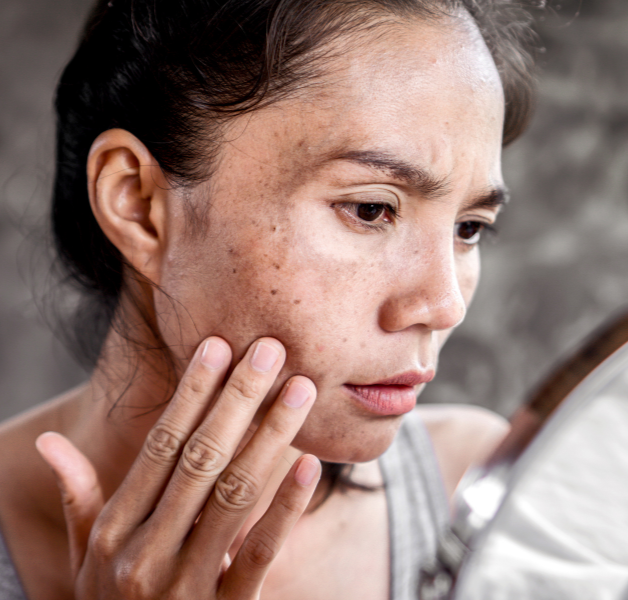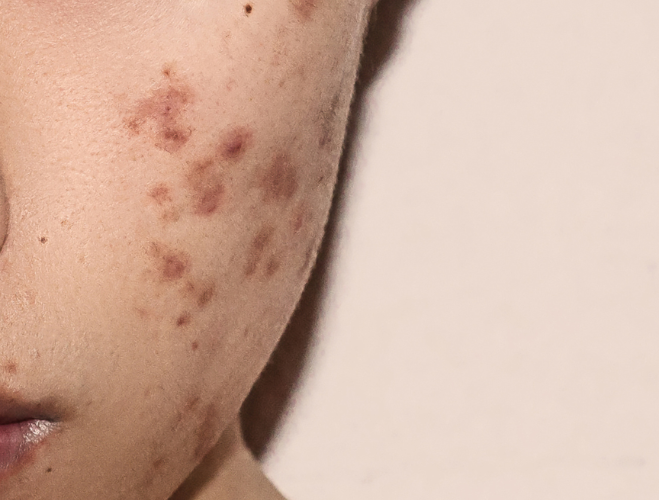Our skin creates melanin. This is responsible for the colour of our skin, but its main role is to protect our skin from the harmful UV rays of the sun.

When the skin is exposed to excessive UV rays or has long term exposure, the melanocytes within our skin’s epidermis (surface layers) produce excess melanin. Each melanocyte protects approximately 36 skin cells and so when they go into overdrive through exposure to UV rays, we see patches of hyperpigmentation. These patches may appear as freckles but as we age the concentration of melanin becomes more erratic and forms age spots.
Hormones can also affect melanocytes, and the resulting hyperpigmentation is called Melasma. This is commonly seen in pregnancy or can result from certain contraceptive medicines. The patches of pigmentation tend to be symmetrical on the face and can extend over large areas of the forehead, cheeks and upper lip areas. This pigmentation will usually fade after pregnancy or the contraception being stopped, however, it may never disappear completely without treatment.
Trauma to the skin (an injury that has broken the skin) can also cause hyperpigmentation, especially in darker skins. This is referred to as Post Inflammatory Hyperpigmentation (PIH). This pigmentation can be restricted to the top layers of skin but can go much deeper depending on the severity of the trauma.
Products which protect the skin from the UV rays of the sun must be used daily to avoid hyperpigmentation.

